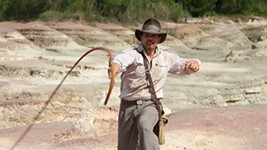Summer Reading 2003
Summer Reading 2003: Augusten Burroughs' follow-up memoir to his bestselling Running With Scissors
Fri., June 6, 2003

Augusten Burroughs sat at home alone, getting plastered. He reached for the Dewar's but wound up with a fistful of floor. As blood dribbled down his face, he thought to himself, "Head wounds are so dramatic." Then he drained the bottle. Droll, handsome, successful -- Burroughs would be quite a catch, if he didn't drink like a fish. Dry (St. Martin's, $24.95) is Burroughs' memoir of kicking his addiction, but unlike other entries in that genre, the key struggle isn't getting sober but staying there. By p.32, Burroughs has enrolled at a gay rehab clinic in Minnesota, where he warms to the kooky patients and recovery-speak. But back in New York, he stumbles through the 12 Steps -- Burroughs has stopped using, but he hasn't really cleaned up. For him, drinking was a kind of willful amnesia, a way to forget all the ugliness of his life, like a vicious childhood of abuse (the subject of his first memoir, the bestseller Running With Scissors) or a friend with AIDS. As our narrator, Burroughs maintains an appealing detachment. When his drug counselor, in all seriousness, hands him The Codependent Woman's Survival Guide, he quips, "I feel like she's handed me a tampon." Yet he's curiously oblivious to the gaping maw into which he saunters, casually, day by day, and watching him approach this downfall can feel as frustrating as a slasher film: Do not open the door! Run away, run away! Burroughs' book also does little to demystify the strange cultish power of AA. How does it work? It just does. It's not very helpful for those wanting to try this by themselves. Or maybe that's the point: You shouldn't. -- Sarah Hepola
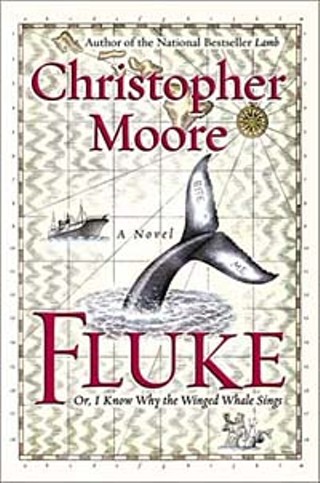
Christopher Moore has composed a fish tale that reads like Melville stamped on silly putty. In Fluke or, I Know Why the Winged Whale Sings (Morrow, $23.95), Nate Quinn is a researcher investigating the song of the humpback whale. One day, out on the boat with his comely assistant Amy, he spots a humpback whale with "Bite Me!" spelled out in white on its tail fin. This is such a demented vision that Nate doesn't vouchsafe it to Amy or his partner, Clay Demodocus. Nate operates on a shoestring from Lahaini, Hawaii, a sea-mammal ocean reserve frequented by seedy New Agers and cetologists. When Nate is swallowed by the whale, and Amy disappears, Clay institutes a search. Meanwhile, Nate comes to onboard a living whale ship manned by horny, crossbred "whaley boys" (half whale, half human). Nate is eventually delivered to the underwater city of Gooville, and he meets the man in charge: his former mentor, Gerard Ryder, aka the Colonel. The Colonel is as mad as Kurz in the Congo. He tells Nate about the Goo -- a billion-year-old superorganism that designed Gooville, the faux humpback, and the whaley boys, as well as rescuing scores of drowning humans. Convinced that the Goo wants to destroy humanity, the Colonel has decided that humanity should destroy the Goo. He wants Nate to help. Of course, a certain comely assistant reappears, and Nate does as much as he can to thwart the Colonel's schemes. Both Jonah and Pinocchio had life-changing experiences in the bellies of fish, and Nate doesn't do too badly, either. -- Roger Gathman
Christopher Moore will be at BookPeople on Friday, June 27, at 7pm.
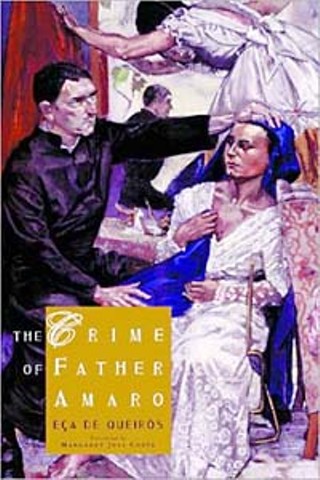
A synopsis of The Crime of Father Amaro (New Directions, $14.95, paper) might sound like a knockoff of the old Thorn Birds television miniseries: Young impassioned Catholic priest goes against his faith to carry on a clandestine affair with a nubile young parishioner. A 2002 movie based on the novel, El Crimen del Padre Amaro, followed this structure closely, tossing in a few drug lords for flavor. Written by 19th-century Portuguese author Eça de Queirós and presented in a new translation by Margaret Jull Costa, The Crime of Father Amaro is among the darkest and most biting of religious satires. The ostensible crime of Father Amaro is his seduction of young Amélia; his real crime is his manipulation of his parishioners and his own religious beliefs, all in order to keep Amélia in his bed. The priests around him are little better, colluding in various deceptions themselves. Before the end of the book, every one of the mortal sins has been committed, not to mention quite a few of the venal ones. Amaro lies and eventually murders in order to preserve his comforts. Equally responsible, however, is the church of his time. Amaro seduces Amélia, but he is also one who is seduced. His parishioners are influenced easily and his fellow priests are more than willing to influence them for political and personal ends. De Queirós' use of description is as visually focused as his wit is sharp. Every physical detail of Amaro's surroundings, each shack and resplendent bourgeois salon, stands out in bright relief. As translated by Jull Costa, de Queirós' language is capable of glowing softly as well as casting a glaring light. It brings a sparkling, brilliant clarity and an unrelenting sense of social absurdity that makes it essentially youthful. And who doesn't love a juicy story of sex and corruption? -- Barbara Strickland
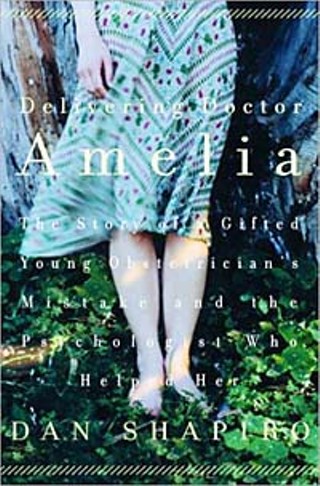
"Nonfiction" is a catchall phrase that has been widely applied to everything from the dozens of books about climbing Mount Everest to books that tell you how to become rich or how to make your home feng-shui fabulous. In my favorite nonfiction books, the writer uses the same techniques as a novelist to make a true story come alive: great dialogue, a compelling storyline, fully developed characters. Delivering Doctor Amelia (Harmony, $24) is one of these books. I'll be honest; it was the subtitle that first drew me in: The Story of a Gifted Young Obstetrician's Mistake and the Psychologist Who Helped Her. But it was Dan Shapiro's masterful storytelling that kept me hooked. Shapiro organizes his tale carefully. He begins with his first impressions of Dr. Amelia, who has come to him for help in moving past a terrible (and unnamed) mistake. But then he allows Amelia to tell her own story, in long italicized sections. Amelia's secret keeps the pages turning, and Shapiro eventually allows the reader into his own life, detailing his own struggle to have a child, and his own biased feelings as Amelia eventually comes clean about her actions. Hearing the patient's own words and then the psychologist's commentary upon these words is fascinating, as when Amelia says of her meeting with the parents of the child she has damaged, "It was fantastic." Shapiro then notes, "I felt like celebrating with her, but her voice didn't sound elated now. She'd said the word fantastic in a low voice." This sort of fly-on-the-wall peek into a doctor-patient relationship makes Delivering Doctor Amelia my favorite sort of nonfiction. It's a well-written, suspenseful story for nosy people, like me. -- Amanda Eyre Ward

"This is a murder mystery novel," begins Christopher Boone in Chapter 7 of Mark Haddon's The Curious Incident of the Dog in the Night-Time (Doubleday, $22.95). But it's not a murder-mystery novel, and it's not really Haddon's book. And it's not really Chapter 7. It's Chapter 4. In Chapter 19, which is really Chapter 8, Christopher, an autistic, 15-year-old mathematics genius, explains: "Chapters in books are usually given the cardinal numbers 1, 2, 3, 4, 5, 6 and so on. But I have decided to give my chapters prime numbers 2, 3, 5, 7, 11, 13 and so on because I like prime numbers." Christopher has decided to write a book because his neighbor's poodle, Wellington, has been impaled with a garden fork, and because he's compelled to chronicle his quest to find the murderer as a school project. His greatest assets are his admiration for The Hound of the Baskervilles and the vacuum of his socio-emotional understandings. These assets in turn are siphoned by Haddon, the acclaimed British children's author and illustrator who has struck fucking gold with his debut "adult" novel (doubly struck, as it were, since Curious Incident is an inarguable artistic triumph, and one that has seen its rights sold to not only more countries than might actually be Earthly, but also Hey Day Films, Harry Potter's production company). Like Doyle, he has that enviable inverse-minded knack for crafting a slyly accessible puzzle, and his young, troubled narrator's detachment (and meta-text) enables him to camouflage conceits -- footnotes, sincere irony, diagrams, illos, influence-anxiety tangents on the nature of the modern novel -- that have begun to annoy us elsewhere. Here, it all works like a charm. As Christopher methodically uncovers far more than he bargained for, more than his innocent analytical head can even begin to comprehend, Haddon's funny, touching, uncomfortably exhilarating read quickens to that in-the-summertime-hours-after-the-library-and-fun-outside-now-it's-time-for-bed moment that we, now, as the older, still dread and embrace: The story's over, dammit. When will he write another one? -- Shawn Badgley

Karl Marx famously declared that history repeats itself: the first time as tragedy and the second time as farce. In Joseph Skibell's The English Disease (Algonquin, $23.95), protagonist Charles Belski -- a Texas-born and -bred Jew married to a shiksa goddess whom he can't stand -- encounters the farcical aspects of the Holocaust on a trip to Europe. This is obviously touchy territory, but old hat for Skibell, whose debut, A Blessing on the Moon, somehow managed to weave humor into the harrowing tale of Jewish victims of Nazi atrocities who rise from the grave to haunt their murderers. Although Belski, a musicology professor at an undisclosed Texas university, attempts to reconcile his lapsed, Americanized Judaism with the tragedy of the Holocaust during a stay in Poland for a conference on the notorious anti-Semite Richard Wagner, the reality of post-Cold War, kitschy Eurotrash seems to preclude any connection with the suffering of his forebears. On a pilgrimage to Auschwitz, Belski stops in a "Jewish" tourist restaurant run by feuding Polish brothers who sell "miniature statues of Hasidic men in fur streimels, their little beards glued onto their chins, their chintzy prayer shawls, each draped like the scarf of an aviatrix around their wooden necks." The further Belski wanders to cure his "English disease" -- melancholia, that is -- the more any semblance of an "authentic" Jewish culture (or any genuine culture, for that matter) seems to escape him. As Skibell jumps back and forth from Poland to his childhood in among the "tumbleweeds and dusty plains" of Karkel, Texas, the brooding subject matter is lightened by the spirit of the Marx brothers (sorry, Karl), whose witticisms Skibell sprinkles throughout the novel. -- Russell Cobb
Joseph Skibell will be at BookPeople on Tuesday, June 10, at 7pm.
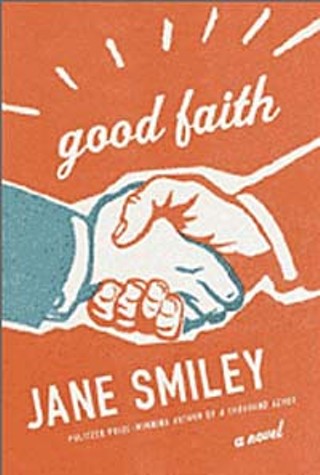
Can you recall a time before there were 700 brands of bottled water? Before fusilli or pinot grigio, before bloated CEOs, SUVs, and McMansions? Jane Smiley can, and in Good Faith (Knopf, $26), the author of A Thousand Acres and Moo charts our transformation into the conspicuous consumers of Pottery Barn Nation -- bigger, fancier, more! -- as a kind of fall from grace. Smiley carries us back to 1982 and a modest New Jersey burg of modestly prosperous entrepreneurs, Craftsman Home builders, and friendly real estate agents -- decent folks who do honest work and have known each other (and forgiven each other's quirks and failings) all their lives. Into this workaday Eden slithers Marcus Burns, former IRS agent who sees a shiny opportunity in the tax-code changes, junk bonds, and tsunami of wealth of Reagan's "morning in America." Soon he's sold the locals -- including protagonist Joe Stratford, a divorced fortyish realtor -- on a scheme to develop an area estate into an exclusive subdivision of 400 luxury homes with a golf course. Burns' naked ambition looks pretty transparent in 2003, but his visions of a Chicken à l'Orange in every pot and a BMW in every three-car garage prove too tempting to small-town Americans reeling from Seventies stagflation. They take a bite of the apple, and, well, things go all to hell. If God is in the details, then Good Faith qualifies as divine. Smiley's narrator, a regular Joe in most respects, has an eye rivaling Sherlock Holmes'. He catalogs the styles of homes, their furnishings and his characters' possessions, so skillfully that we can appreciate the world that was and what it becomes. In descriptions of Dutch Colonial homes, Italian entrées, and German cars, Smiley reminds us how the allure of the upscale led us to take Paradise and put up a parking lot. -- Robert Faires
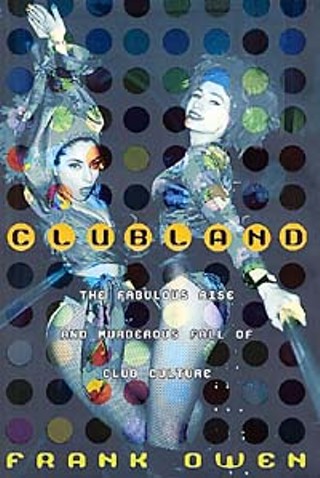
Those who think Austin's rave community has been through the proverbial wringer in the last year or so ought to thank their lucky glow sticks they're not in New York City these days. Tying together four distinct NYC characters that ultimately collide under the weight of the Giuliani administration's lust for urbanity minus the seamy underbelly, Frank Owen's Clubland (St. Martin's, $24.95) is an addictive, thugs-night-out look into legendary club overlord Peter Gatien's Limelight -- a former Episcopal church complete with gargoyles and an imposingly labyrinthine system of perpetually benighted corridors and warrens that under Gatien's reign became the premier clubbing hotspot and indoor drug market in the city. Gatien, a Canadian émigré who started his nightclub empire in the early Eighties and plowed through mountains of cash before running up against a concerted effort by the FBI and NYPD to shut him down in the late Nineties, was (and is still, according to Owen) a one-of-a-kind entrepreneur who likely couldn't have made it anywhere but in NYC. Orbiting Gatien are shriekingly mad club-kid fixture Michael Alig (currently in jail for the gruesome murder of another clubber), party promoter and wannabe mafioso Chris Paciello, who fled NYC only to end up in South Beach hosting Madonna's birthday parties, and punchy impresario Lord Michael Caruso, who hung with the Wu-Tang Clan before falling prey to the formidable lure of easy clubland monies. Owen's evocative prose goes deep into the sleazy, slimy NYC nighttime experience of the Eighties and Nineties -- the book opens with the author taking a hit of the animal tranquilizer-cum-club drug Ketamine to see what all the fuss is about, so no one can accuse him of not doing his research -- and ultimately reveals that too much of a groove thing can be a blissing in disguise. -- Marc Savlov
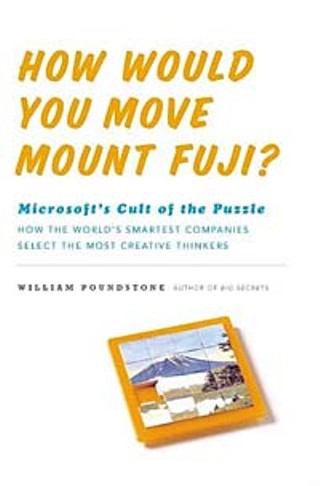
Four people must cross a rickety footbridge at night. Two of them have read William Poundstone's How Would You Move Mount Fuji? (Little, Brown, $22.95), a book on why companies, notably Microsoft and Wall Street investment banks, give job applicants such interview questions as "If you could remove any of the fifty U.S. states, which would it be?" or "How many Ping Pong balls can you fit in a 747?" One of our bridge-crossers, though afraid of heights, likes to read well-written books that combine how-to with be-smart for an audience of jobseekers, interviewers, Wired-style cognitive science hobbyists, and the onlooking curious, a book that more than occasionally gallops down entertaining sidepaths about the history of intelligence testing, the origins of Silicon Valley, and the brain-jockey heroics of Microsoft culture. The last person, meanwhile, is always up for brain teasers, logic problems, and semantic puzzles, though is always glad for an answer key and uses it without feeling guilty. The bridge is going to collapse in exactly 17 minutes. How can all four people cross the bridge? -- Michael Erard

Set in West Texas (presumably, but Suzan-Lori Parks' Lone Star geography seems a bit fuzzy, as evidenced in her assumption that one can drive from Midland to Navasota, spend the night in jail, and drive back again, all inside 24 hours), Getting Mother's Body (Random House, $23.95) is ostensibly a story about a teenage girl, Billy Beede, who sets out to recover her mother's body from a soon-to-be-paved-over grave in Arizona. It's not so much the body she's after, but what was buried with it: diamonds and pearls, the recovery of which would ease Billy's life a bit, as she is the jilted expectant mother of an illegitimate child. The pursuit of treasure lies at the core of the narrative, but it is swaddled in extranarrative examinations of class and race -- pitting African-Americans not only against racist, ignorant, obese white folks, but also against each other -- as well as the relationships that make a group of people a family, and the actions that can alienate one from that family. While Getting Mother's Body is indeed a pleasant, quick read, acclaimed playwright Parks (In the Blood, Fucking A) has crafted a novel that might be better suited for a college-level English class than for lounging by the pool. The material begs for the kind of close reading and deep analysis that provides rich research fodder for critics who have devoted their careers to heady literary concepts. In other words, Getting Mother's Body is Literature for Academics, but that doesn't mean that the lay reader won't find things to enjoy. -- Melanie Haupt

The phrase "Comics aren't just for kids anymore" passed its statute of limitations decades ago. By now, people ignorant enough to think otherwise are too ignorant to warrant the effort of correcting -- and comics themselves don't need the condescension. Especially not when there are anthologies like The Ganzfeld (Monday Morning, $24.95, paper) and Rosetta (Alternative Comics, $19.95, paper) to be enjoyed. The Ganzfeld, though, isn't precisely a comics anthology. The third volume of this annual extravagance from editors Dan Nadel and Peter Buchanan-Smith does contain a few cartoon stories ("Mr. Bellevue Meets the Tiger Taxi" by Blexbolex, Brian Ralph's "Ship-Recks," and others) and frequently references comics history, but it's more a brilliant (and damn thick) graphic document showcasing other documents of graphic brilliance and presenting essays on the delights of natural and fabricated beauty. Alfred Hitchcock's illuminated glass of milk from Suspicion serves as a threshold to Peter Blegvad's arrangement of lactocentric quotes and images; Julie Lasky re-introduces us to Tony Sarg, the 1920s-era illustrator who created the first Macy's Thanksgiving Day Parade balloons; Nadel himself lengthily interviews members of Chicago's Hairy Who artists; Lawrence Wechsler writes about Edward Snow writing about Peter Bruegel; Rick Moody supplies a story about addiction. The Ganzfeld is packed with wonders like these, all of which are illustrated in full color (Fred Tomaselli's complex images galvanize the Moody piece) on the thickest, silkiest paper practical. Rosetta, edited by Ng Suat Tong, is a comics anthology, offering work by some of the best talents in the field today. It's quite a feat for the contents to match the front cover, as that cover's another full-color ripple from the ever-flowing river of Dave Cooper, and the diverse insides are only black and white (well, dark brown and white). But when those insides are comics from David Lasky, Matt Madden, Megan Kelso, Miriam Katin, Tom Hart, Ron Rege Jr., and their ilk, who needs more than two colors? You might even be tempted to wonder who needs Americans after your eyes and mind get acquainted with Dutchman Stefan J.H. Dinther's "Instructions" and "One Day" by Croatian Danijel Zezelj. -- Wayne Alan Brenner
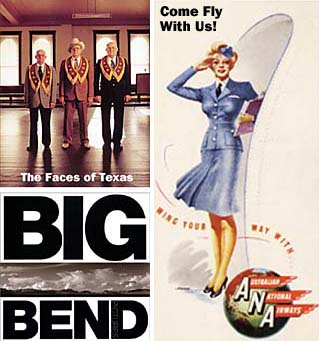
Wandering among the portraits presented in The Face of Texas (Bright Sky Press, $34.95) by Michael O'Brien, it's not hard to imagine Texas as a Republic. The democracy of legends shoulder to shoulder with schoolteachers and waitresses is compelling, and unlike the pervasive real-people-as-freaks portraiture popularized by photographers like Diane Arbus, O'Brien relies on the pedestrian to resonate the human condition to great effect. The large-type format and unbiased tone of former Life magazine reporter Elizabeth O'Brien's accompanying stories bring an immediacy to the pictures that left us with the feeling that we had walked up and shaken hands with the subjects on the turn of each page. Another wonderful portraitist can be found in James Evans, whose Big Bend Pictures (UT Press, $39.95) brings the great outdoors in on hot afternoons. Combining stark black-and-white photographs of both the vistas and the people of Big Bend, with an insightful forward by Robert Draper, we believe that maybe the sky really is bigger in Texas. Finally, another book worthy of your summer coffee table is Come Fly With Us! (Collectors Press, $24.95) by Johanna Omelia and Michael Waldock. Providing a colorful and detailed history of the 64-year-old profession of the airline hostess, and crammed with pictures from each era, it is a startling reminder of a gentler time, when beautiful hostesses epitomized the glamour of jet travel. -- Anne Harris
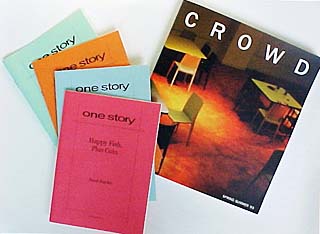
Lit mags! Having shed the academic look (and writer-centric demographic) for something far more styling, some of the newer publications appear as captivating on the outside as the short stories, essays, and poems are on the inside. Crowd (www.crowdmagazine.com) is visually breathtaking, intermingling photography and paintings with prose and poetry by both established and emerging writers. From issue No. 3, in Arielle Greenberg's poem, The Deep End, "everyone's got the squeeze/on someone else's squeezy"; in Kathleen Andersen's story, "Nyla and Daddy Walrus," "Daddy Walrus has been misbehaving again"; and Wei Dong's series of paintings creates a frightening, enticing, sexy world that haunts the page... The editors of One Story (www.one-story.com) have a theory: You can always find time to read one story. How can you resist with titles like, "Boy's Industrial School," "Eating Ohio," and "Happy Fish, Plus Coin"? How can you resist when the single-story 5-inch-by-7-inch pamphlets can slide into the back pocket of your jeans? Subscribe, and every month one will appear in your mailbox. Stick these teeny mags in your purse or in your European Carry-All, and you are set for whatever delay you might encounter at the airport... Speaking of small, check out Quick Fiction (www.jppress.org). This 40-page, 6-inch-by-6-inch magazine features pithy, sometimes hysterical short stories in 500 words or less! Take it to the beach, and you can read 10 stories before you start to burn... Fans of baseball might want to check out Elysian Fields Quarterly (www.efqreview.com), a long-established review that features poetry, fiction, and essays "by rookies and established veterans" that are all about the national pastime. -- Kate Cantrill
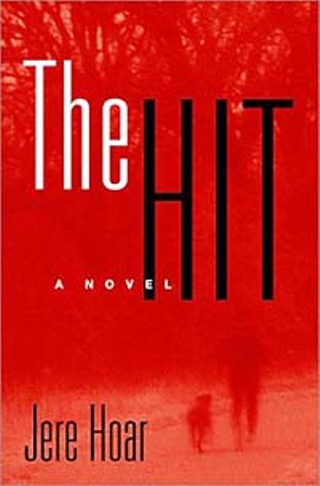
Lean and lyrical as a roadhouse ballad, The Hit, by Jere Hoar (Context, $24.95) set its hooks in me from the first-person prologue and never let go. Think James M. Cain's Double Indemnity set in a small town in the woods of northern Mississippi, which turn out to be an even more dangerous jungle for troubled Vietnam veteran Luke Carr than the killing fields of Southeast Asia. Luke conceives the perfect crime, stealing the art collection of Tom Morris, the richest SOB in town. Then Morris' wife, Kinnerly, enters the mix. She was the sorority bitch who dumped Luke in college; now she wants him to kill her husband. The sex is great, and the plan is foolproof -- the perfect formula for a corkscrew slide into hell... Money for Nothing, by Donald E. Westlake (Mysterious Press, $24.95) is the story of Josh Redmond, an office temp who inexplicably received a $1,000 check in the mail from an obscure federal agency called "US Agent." He assumed it was a mistake but needed the money. Another check arrived every month afterward, and he spent every one of them. Seven years later, he's an advertising executive with a wife and kid, abruptly informed by a stranger that the checks were his pay for being a sleeper agent, but that he is now being activated. His New York apartment is now a safe house, and he's supposed to help Ukrainian agents assassinate a foreign head of state in Yankee Stadium. Westlake is one of the few novelists out there who consistently pulls off such zany, high-concept plots with wit and panache to spare... Land of the Living by Nicci French (Warner Books, $23.95) opens with 50 pages of grunge terror: Abbie Devereaux wakes up tied, tethered, and hooded, unable to see her kidnapper, or even remember how it all happened. He keeps her alive with a thin gruel, promising to kill her soon "like all the others." With a "now-or-never" drumbeat in her ears, Abbie manages a miraculous escape. However, she's unable to provide any real proof behind her story or to reconstruct the gaps in her memory, so the police and doctors don't believe a word of it. Retracing her steps during her recent past, she not only has to find the identity of her captor -- who is simultaneously tracking her -- but her own untidy secrets, as well. This is a gimmicky, manipulative read with a killer ending. A sure-fire summer hit. -- Jesse Sublett





